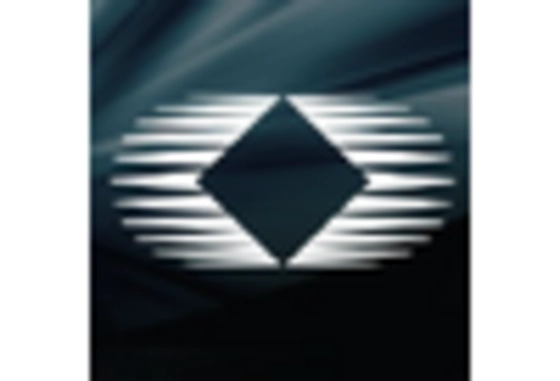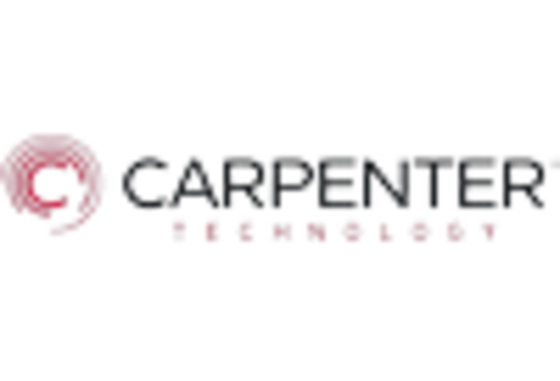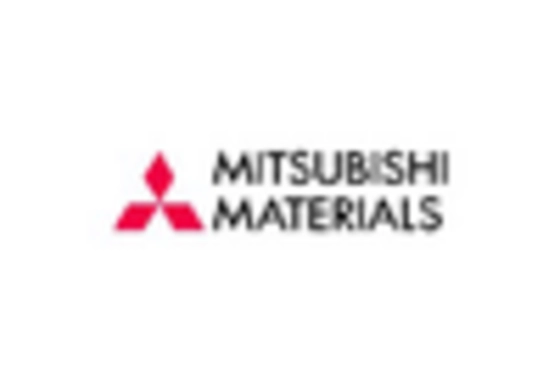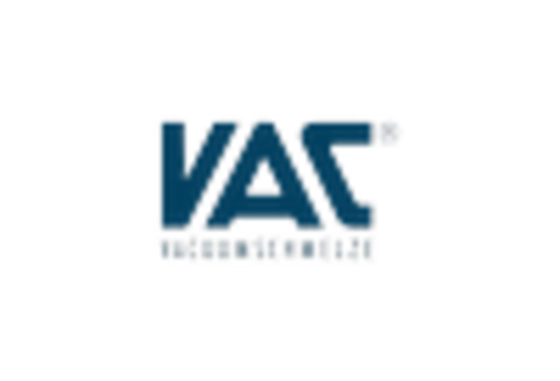Automotive Industry Transformation
The Soft Magnetic Material Market is witnessing a transformation driven by the automotive sector's evolution towards electrification. The rise of electric vehicles (EVs) necessitates the use of advanced soft magnetic materials in electric motors and power electronics. These materials are crucial for improving the efficiency and performance of EV components. The automotive industry is expected to grow at a compound annual growth rate of around 8% in the coming years, with a significant portion of this growth attributed to the increasing adoption of electric vehicles. This shift presents a substantial opportunity for the Soft Magnetic Material Market to expand its offerings and cater to the specific needs of the automotive sector.
Emerging Markets and Economic Growth
The Soft Magnetic Material Market is benefiting from the economic growth in emerging markets. As countries develop, there is a rising demand for electrical infrastructure and consumer goods, which in turn drives the need for soft magnetic materials. Industries in these regions are increasingly adopting advanced technologies, leading to a higher consumption of soft magnetic materials in applications such as power generation and distribution. The market in emerging economies is projected to grow at a rate of approximately 6% annually, reflecting the increasing investments in infrastructure and technology. This trend indicates a promising future for the Soft Magnetic Material Market as it aligns with the global economic development.
Growth in Consumer Electronics Sector
The Soft Magnetic Material Market is significantly influenced by the growth in the consumer electronics sector. With the proliferation of smart devices, there is an increasing need for efficient power management solutions. Soft magnetic materials are essential in the design of inductors and transformers used in various consumer electronics, including smartphones, laptops, and gaming consoles. The consumer electronics market is projected to grow at a rate of approximately 5% annually, which directly impacts the demand for soft magnetic materials. As manufacturers strive to create more compact and energy-efficient devices, the Soft Magnetic Material Market is likely to benefit from this trend, leading to enhanced product offerings and innovations.
Rising Demand in Renewable Energy Applications
The Soft Magnetic Material Market is poised for growth due to the increasing demand for renewable energy solutions. As the world shifts towards sustainable energy sources, the need for efficient magnetic materials in wind turbines and solar inverters becomes paramount. Soft magnetic materials play a crucial role in enhancing the efficiency of energy conversion processes. The market for soft magnetic materials in renewable energy applications is expected to expand, with estimates suggesting a growth rate of around 7% annually. This trend indicates a robust opportunity for manufacturers to innovate and supply materials that meet the stringent requirements of the renewable energy sector, thereby driving the Soft Magnetic Material Market forward.
Technological Advancements in Soft Magnetic Materials
The Soft Magnetic Material Market is experiencing a surge in technological advancements that enhance the performance and efficiency of magnetic materials. Innovations in material science, such as the development of nanocrystalline and amorphous alloys, are leading to improved magnetic properties. These advancements allow for better energy efficiency in applications like transformers and inductors, which are critical in power electronics. The market is projected to grow at a compound annual growth rate of approximately 6% over the next few years, driven by these technological improvements. As industries increasingly adopt advanced materials, the Soft Magnetic Material Market is likely to witness a significant transformation, catering to the evolving needs of sectors such as renewable energy and automotive.

















Leave a Comment